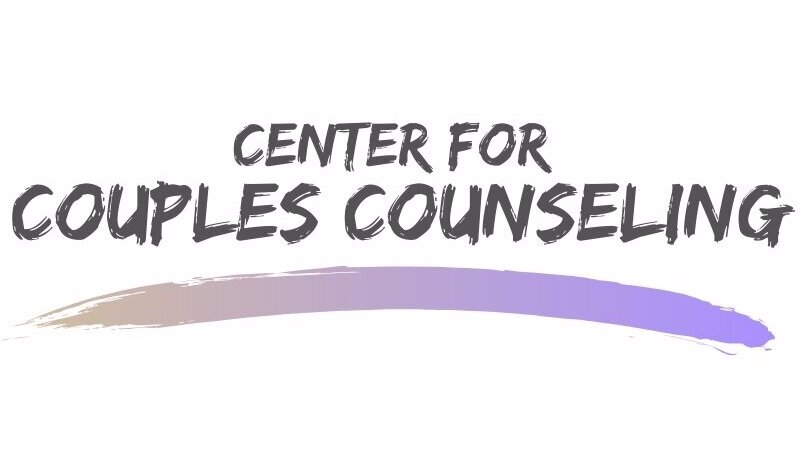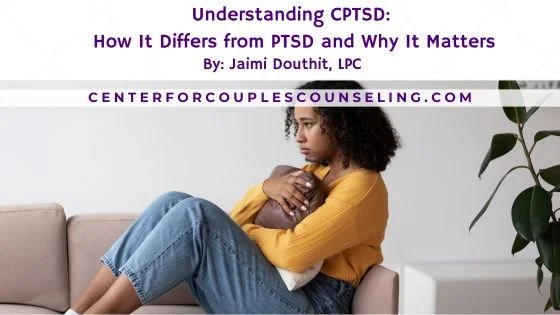Understanding CPTSD: How It Differs from PTSD and Why It Matters
If you’ve ever thought, “Why am I like this?” as your anxiety spirals, your confidence vanishes, and your self-worth swings wildly with no warning, or if connection feels both necessary and terrifying- this one’s for you.
Most people have heard of PTSD. It’s the trauma diagnosis everyone associates with war zones, accidents, or other terrifying, life-threatening events. And that’s valid. PTSD is real, and it can be debilitating. But not all trauma shows up as one big devastating moment. Sometimes, it’s slow. Repetitive. Quiet. The kind that lingers. The kind that trains you over time to doubt your own feelings, shrink yourself, and constantly scan the room for danger even when everything looks fine.
That’s where Complex PTSD, or CPTSD comes in.
PTSD 101 (The One We All Know About)
PTSD usually shows up after a single traumatic event. It includes:
Flashbacks and intrusive memories
Avoidance of reminders
Hypervigilance (read: always waiting for the other shoe to drop)
Negative shifts in thoughts or mood
It’s like your nervous system got stuck in fight/flight/freeze mode and never got the memo that the threat is over.
CPTSD 101 (The One That Describes Half of TikTok but No One Talks About)
CPTSD happens when trauma is chronic, relational, and often starts early. Think: growing up with emotionally immature or abusive parents, living in a household where you had to be the adult way too soon, enduring emotional neglect, or being in a long-term toxic relationship that quietly dismantled your sense of self.
With CPTSD, you might still get the classic PTSD symptoms, but you also get bonus features like:
Emotional whiplash (hello, big reactions that confuse even you)
Chronic shame and self-doubt (like a bully living rent-free in your brain)
Relationship chaos (push-pull patterns, fear of abandonment, or straight-up isolation because people are exhausting)
This isn’t about being “too sensitive.” It’s about being shaped by environments that made survival your full-time job.
Okay But… What’s the Actual Difference?
Here’s the vibe:
PTSD: Something awful happened to me and I can’t shake it.
And here's the kicker: a lot of people with CPTSD go undiagnosed or misdiagnosed. You might’ve been told you have anxiety, depression, or a mood disorder.
Which, okay, sure… but why? CPTSD is often the thing underneath all of that.
Why It Absolutely Matters
Because naming it changes the game. Suddenly, the way you react to stress, your fear of rejection, your avoidance of vulnerability, your people-pleasing, your freeze responses, it all starts making sense.
So no, it’s not just anxiety. It’s not just “being sensitive.” It’s the very real imprint of having to carry shit that was never yours to carry. And you didn’t get a trophy or a guidebook for it… just symptoms that make you feel like you’re failing at life.
CPTSD messes with how you relate to others, how you see yourself, and how your body responds to even mildly stressful situations (like your partner saying “we need to talk,” or someone using “...” in a text). The body remembers. And sometimes it screams about things that look minor from the outside but feel massive on the inside.
What Healing Actually Looks Like
Here’s what we’re not going to do: slap a positive affirmation over your complex trauma and call it healed.
Healing from CPTSD is layered. It takes time. It takes feeling safe, probably for the first time ever. It’s about learning how to regulate your emotions instead of riding them like a chaotic wave. It’s grieving what you didn’t get. And it’s slowly rewriting the narrative from “I’m broken” to “I adapted, and now I get to choose differently.”
This might involve EMDR, IFS, somatic therapy, inner child work, or just a consistent, real-deal therapist who doesn’t flinch when you say the hard stuff. You deserve care that understands the depth of what you’ve lived through.
If you’ve ever said, “I don’t know what’s wrong with me,” or “Why can’t I just be normal - how do I try so hard and continue to fail?” … First of all, I see you. Second of all, samesies. That’s the voice of trauma, not truth.
CPTSD is not a flaw in your character. It’s a response to prolonged harm. And healing is not only possible—it’s your right. You get to unlearn survival mode. You get to have boundaries, softness, joy, stillness. Even if those things feel foreign right now.
So here’s your reminder: You are not too much. You are not broken. You are someone who adapted to painful shit, and that alone speaks volumes about your strength.
Let’s start there.
My name is Jaimi Douthit and I’m a Licensed Professional Counselor at the Center for Couples Counseling. I love working with couples and individuals who are ready and motivated to make changes in their lives and relationships, who can handle feedback and encouragement, and engage in using the tools I teach in therapy outside of the therapy room. At the Center for Couples Counseling, we specialize in couples therapy, infertility counseling, postpartum mood and anxiety disorders, self-care and burnout, and perfectionism. We help couples and individuals in the League City and Houston areas in person, and all residents of the State of Texas online. Call us at (832) 827-3288 to schedule a free phone consultation.
Begin Couples Therapy in League City, TX
We know relationships take a lot of hard work. But your relationship is important and deserves the effort. At Center for Couples Counseling we want to help you and your partner get back on the right track. To get started with in-person or online couples therapy follow these simple steps:
Meet with one of our skilled couples therapists
Begin to see positive changes in your relationship
Other Services Offered at Center for Couples Counseling
At the Center for Couples Counseling, we understand you or your relationship may be facing different challenges. To help you work on yourself and your relationship, our Texas practice offers individual therapy, infertility counseling, postpartum anxiety, and depression counseling, therapy for self-care and burnout, and therapy for perfectionism. For more about us check out our FAQs and blog!






